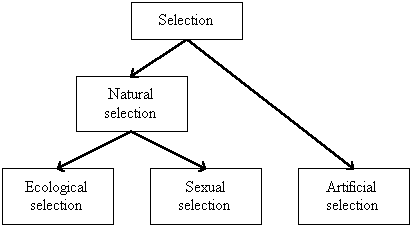Intelligent Design is defined by the Discovery Institute as:
“THE THEORY OF INTELLIGENT DESIGN HOLDS THAT CERTAIN FEATURES OF THE UNIVERSE AND OF LIVING THINGS ARE BEST EXPLAINED BY AN INTELLIGENT CAUSE, NOT AN UNDIRECTED PROCESS SUCH AS NATURAL SELECTION” (http://www.intelligentdesign.org/).
The classic definition of ID Theory employs the term, “intelligent cause.” Upon studying William Dembski’s work, which defines the ID Theory understanding of “intelligent cause” using Information Theory and mathematical theorems, I rephrased the term “intelligent cause” to be “artificial intervention,” and have written extensively on the subject for why it’s a better term.
Both terms are synonymous, however phrasing the term the way I do helps the reader to more readily understand the theory of intelligent design in the context of scientific reasoning. In his book, “The Design Inference” (1998), Dembski shows how design = specified complexity = complex specified information. In “No Free Lunch” (2002), he expands upon the role of “intelligence.”
The idea of “intelligence” is nothing much other than the default word to mean something that is other than a product of known natural processes. Design theorists predict there are yet additional discoveries to be made of mechanisms for design that supplement evolution and work in conjunction with evolution. Another term to mean just the opposite of natural selection is artificial selection.
There are two kinds of selection, natural selection and artificial selection.
Charles Darwin, famous for his book, “Origin of Species,” wrote about the difference between natural selection and artificial selection in other literature he wrote on dog breeding. Charles Darwin coined the term, “natural selection.” Darwin observed dog breeding. He recognized that dog breeders carefully selected dogs with certain traits to mate with certain others to enhance favorable characteristics for purposes of winning dog shows. Darwin also wrote a book 13 years after Origin of Species entitled, “The Expression of the Emotions in Man and Animals.” The illustrations he used of dogs can be viewed here.
I wrote an essay about Darwin’s observations concerning dog breeding here. Essentially, artificial selection = intelligence in that the terms are interchangeable in the context of ID Theory. I didn’t want to use either term in the definition of ID, so I chose a phrase that carries with it the identical meaning, “artificial intervention.”
Artificial intervention contrasts natural selection. The inspiration that led to Charles Darwin coining the term, “natural selection” was when he observed dog breeding. Darwin saw how dog breeders select specific dogs to mate in order to enhance the most favorable characteristics to win dog shows. This is the moment when he realized that what happens in the wild is a selection process that is entirely natural without involvement of any other kind of discretion factored in as a variable.
The moment any artificial action interrupts or interferes with natural processes, then natural processes have been corrupted. ID Theory holds that an information leak, which we call CSI, entered in the development of the original cell via some artificial source. It could be panspermia; quantum particles, quantum biology, natural genetic engineering (NGE), or other conjectures. This is ID Theory by definition of ID Theory. All processes remain natural as before, except an artificial intervention took place, which could have been a one-time event (the front-loading conjecture) or is ongoing (e.g., NGE).
One example of artificial intervention would be panspermia. The reason why is because the Earth’s biosphere is a closed system. The concept of abiogenesis is based upon life originating on Earth. The famous Stanley Miller and Harold Urey experiments attempted to replicate the conditions of the primordial world believed to be on Earth. With abiogenesis, it is a conjecture to explain how life naturally arose from non-life on Earth, assuming such an event ever occurred on this planet.
Panspermia, on the other hand, is an artificial intervention that transports life from a different source to earth. While panspermia does not necessarily reflect intelligence, it is still intelligent-like in that an intelligent agent might consider colonizing planet earth by transporting life to our planet from a different location in the universe.
I have been challenged much on this reasoning with the objection being that artificial selection was understood by Darwin to be that of human intelligence. I can provide many arguments that would indicate there are perfectly acceptable natural mechanisms, entirely non-Darwinian, that due to the fact that they are independent of natural selection, therefore they have to be “artificial selection” by default even if not the product of human intelligence. A good example would be an extraterrestrial intervention. So, this objection doesn’t concern me.
The objection that does concern me is when someone confuses the ID understanding of “intelligence” to be non-natural. This is where I agree with Richard Dawkins when he writes the “intelligence” of ID Theory is likely entirely illusory (http://www.naturalhistorymag.com/htmlsite/1105/1105_feature1_lowres.html).
This is yet another reason I prefer the term artificial intervention because it leaves room for the conventional understanding of intelligence, and yet remains open to other natural mechanisms that remain to be discovered, and sets these in contrast to already existing known natural processes that are essentially Darwinian. The term “Darwinian” of course means development by means of gradual, step-by-step, successive successive modifications one small change at a time.
“Artificial Intervention” is a term I came up with four years ago to essentially be meant as a synonym to the Intelligent Design phrase, “Intelligent Cause.” When challenging the theory under critical scrutiny, ID is often ridiculed because opponents demand evidence of actual intelligence. This request misses the point.
The idea of intelligent design is not restrained to requiring actual intelligence to be behind other processes that achieve biological specified complexity independent of natural selection. Just the fact that such processes exist confirm ID Theory by definition of the theory. ID proponents expect there to be a cognitive guidance that takes place. And, that appears to be very well the case. But, the intelligence could be illusory.
Whether actual intelligence or simulated, the fact that there are other processes that defy development via gradual Darwinian step-by-step successive modifications confirms the very underlying prediction that defines the theory of Intelligent Design.
I wrote this essay to explain why intelligence does not have to be actual intelligence. Any selection that is not natural selection is artificial selection, which is based upon intelligence, and therefore Intelligent Design. However, the point is moot because William Dembski already showed using his No Free Lunch theorems that specified complexity requires intelligence. Nevertheless, this essay is an explanation to those critics who are not satisfied that ID proponents deliver when asked to provide evidence of an “intelligent cause.”
The term, “artificial intervention” is not necessary in order to define the scientific theory of intelligent design. However, I believe it is quite useful to expand upon a deeper and more meaningful way of conveying “intelligent cause” without compromising scientific reasoning.




Pingback: Artificial intervention _ intelligent design artificial intelligence software for android
Artificial intervention…if is not carefully explored it can have a negative impact on natural selection. No? It can destroy nature no?
Nature is embracing artificial intervention. It can be a natural artificial negative or positive impact.
So artificial intervention is embracing Nature?……….